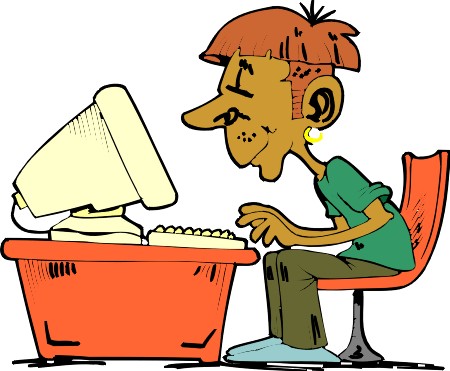
 |
||||||||
Relazione sul laboratorioNella prima lezione abbiamo parlato del moto. Il professore ci ha mostrato uno strumento, il sensore di movimento, per misurare il tempo, la velocità e la distanza. Nella seconda lezione siamo andati in giardino abbiamo costruito un percorso con i coni. Il profesore ci ha divisi in tre gruppi e ogni gruppo doveva cronometrare il tempo che impiegava a percorrere il percorso. E' stato cambiato il tempo di percorrenza di ogni persona. Abbiamo scritto una media del tempo che ci metteva ognuno di noi a percorrerlo. Succesivamento abbiamo disegnato un grafico dei risultati di ogni persona. Nella terza lezione abbiamo repilogato tutto a voce e trascritto sul quaderno, poi abbiamo fatto degli esempi di velocità. Dopo aver svolto questa operazione ci siamo spostati in aula di scienze. Qui con il sensore di movimento abbiamo fatto alcuni esperimenti, perorrendo un percorso o facendo rotolare una pallina, in un percosro fatto con i libri da noi. Poi il professore ci ha spiegato come si legge il grafico. Nella quarta lezione abbiamo fatto altri esperimenti con il sensore di movimento. Poi il professore ci ha spiegato che nel grafico ci sono delle zone piatte (cioè cambia il tempo ma non la distanza), delle zone in pendenza (cioè cambia la distanza e il tempo) in fine ci ha spiegato come si misura la velocità. Nella quinta lezione abbiamo fatto degli esempi su sistemi di riferimento, che sono oggetti che ci permettono di capire se un corpo si muove o è fermo. Il prima e il dopo è stato indicato da una regola creata da uno scenziato (Reichenbach), eccovi la regola: i processi irreversibili servono per ordinare tutti gli avvenimenti, cioè per stabilire una serie ordinata di "prima" e di dopo o, come si dice, un ordine di tempo. IRREVERSIBILE: è stato piantato un seme in un vaso, dopo un po' di tempo è cresciuta la piantina, la pianta produce altri semi, che verranno piantati ma non si potrà mai tornare al seme iniziale. Questo è un processo irreversibile. In poche parole un avvenimento è irreversibile quando non si può fare l'inverso. Per utilizzare due orologi nello stesso esperimento, ad esempio in quello dove bisogna lanciare una palla al di là di un muro e cronometrare il tempo di quanto ci mette a fare questo percorso, bisogna prima di tutto sincronizzarli, poi posizionare un ragazzo al di qua del muro e uno al di là. Quello che lancia la palla farà scattare il primo orologio e quello che la riceve fermerà il secondo orologio all'arrivo della palla. Così si ottiene il tempo che ci ha messo la palla a percorrere il percorso.
|
Report on the laboratory
In the second lesson we have gone in garden, there we constructed a track with some cones. The prof has divided us in three groups and every group had to time the time that one of us employed to cover the distance. We have written the average time of everybody. Then we designed a diagram of every person. In the third lesson we have rrecapitulated all verbally. In the science laboratory: here with the motion - sensor we have made some experiments, to cover a distance or to roll a little ball, in a track made with books. Then the prof explained us like to read the diagram:
In the fifth lesson we studied a reference frame,it allows us to understand if a body moves or if it is still. "Before" and "after": Reichenbach studied this peoblem; there are the irreversible processes and the reversible process. An irreversible process orders all the events, i.e.it is possible to establish a ordinate series: "before" and "after", a time order. IRREVERSIBLE: it has been planted a seed in a vase, after a little time a little plant has grown, the plant produces other seeds, that they will come plants, but it will never be able to return to the first seed. This is an irreversible process. In little words a event is irreversible when the inverse cannot be made. Another problem: how is it possible to use two clocks in the same experiment? For example we wanto to launch a ball beyond a wall and to time how much time the ball puts to cover this distance. We need two clocks in two different places: they have to be synchronized, then we need two boys on the sides of the wall. The boy, who throws the ball, reads the starting time on the first clock and the boy beyond the wall reads the time on the second clock whenthe ball will arrive. So the time is obtained for difference. |
|
 |
||